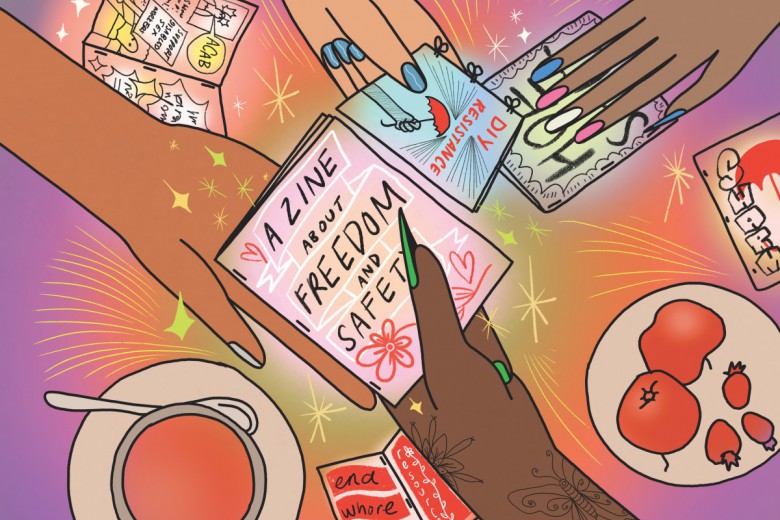
Whitetail Shooting Gallery
By Annette Lapointe
Anvil Press, 2012
Whitetail Shooting Gallery follows cousins and neighbours Jennifer and Jason as they grow up in the stark landscape of the Bear Hills near Saskatoon. The two are close as children, but their friendship slowly unravels as they move into adolescence. The growing uneasiness between the pair erupts into violence when Jason wounds Jennifer and her horse in a shooting. She survives, but whether the shooting was accidental or motivated by anger or fear is never made clear.
As the cousins struggle with the repercussions of this event, they also have to contend with the teenage trials of exploring their own sexual identities. Jennifer eventually finds ecstasy in the arms of her friend Donna, the goth daughter of an evangelistic preacher. Jason, too, is queer. During the chaotic night of a hockey hazing ritual, which begins as a game of hunting one another in the dark, Jason has sex with a teammate.
Whitetail Shooting Gallery contains frequent metaphorical allusions to predators, often when describing the relationships between characters. A disquieting mood pervades the novel, keeping tensions at an interminable simmer. Yet instances of violence, which are numerous, are often incidental; rarely are they acts of cruelty motivated by malicious intent. Lapointe’s characters develop scars, becoming hard in the process rather than fearful: “They might hurt all over, but that’s not an emergency; it’s just the state of them.”
As Jason and Jennifer move into their 30s, the world around them changes, but they continue to drift with little in the way of revelatory insight. The shooting is revisited in a final, violent confrontation between the two, but questions of motive and circumstance continue to linger. There is no redemption or closure in the final pages, atypical for a coming-of-age narrative. One can still close the book satisfied, largely due to the strength of Lapointe’s graceful prose and the novel’s haunting, melancholic atmosphere.
“In the good old days, children like you were left to perish on windswept crags,” the young Jennifer writes on the walls of her friend Gina’s bedroom, unsure “whether it’s aimed at Jason or her, or some other kid she’s never met.” Whitetail Shooting Gallery offers a piercing glance at children who manage to survive as they stumble, unflinching, through this dangerous world.






